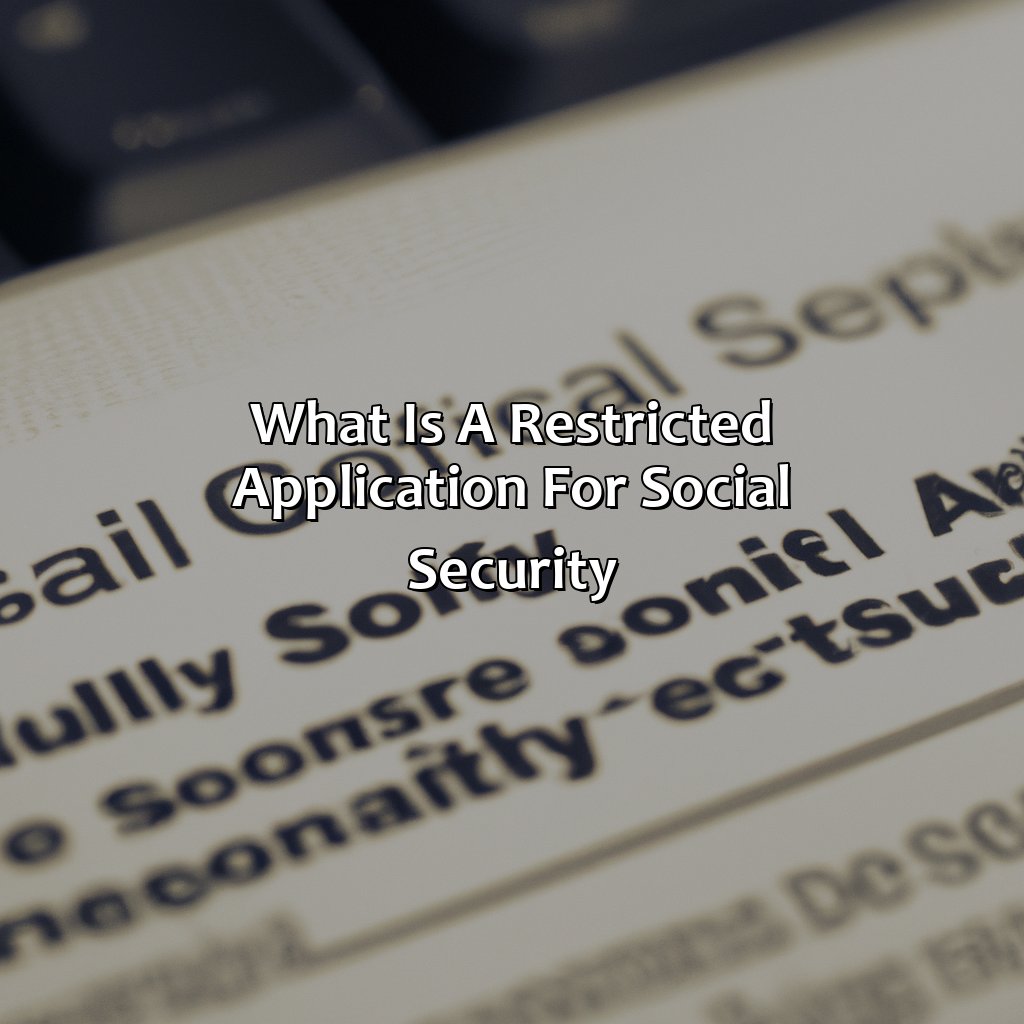What Is A Restricted Application For Social Security?
Key Takeaway:
- A restricted application is a way for eligible individuals to limit their claim to only spousal benefits, allowing their own retirement benefits to accrue delayed retirement credits while they continue to receive payments. This can lead to higher overall benefits in the long run.
- Eligibility for a restricted application includes being at full retirement age, having filed for or already receiving Social Security retirement benefits, and having a spouse who is also receiving Social Security benefits. Additionally, the individual must not have filed for their own retirement benefits yet.
- The benefits of a restricted application include allowing the individual to earn delayed retirement credits on their own retirement benefits while still receiving spousal benefits, which can lead to higher overall benefits. They may also be able to receive a higher payout by choosing to switch to their own retirement benefits at a later time.
- There are also limitations to a restricted application, such as the fact that it is only available to those born before January 2, 1954 and that it may not be the best financial decision for everyone. It is important to carefully consider one’s individual circumstances before deciding to apply for a restricted application.
- To apply for a restricted application, individuals must provide documentation such as their Social Security number, birth certificate, marriage certificate, and information on their current Social Security benefits. The timeline for submitting an application varies depending on individual circumstances and should be carefully reviewed.
Have you ever considered how to maximize your social security benefits? You may be able to do so with a restricted application for social security. Learn how it works and see if it is the right choice for you.
What is a Restricted Application?
A restricted application for Social Security is when a person delays receiving their own benefits while receiving spousal benefits. This strategy allows the person to receive a higher payout down the line. Essentially, it involves filing for spousal benefits while allowing their own benefits to grow until they reach the age of maximum payment. Once they do, the person can then switch to receiving their own benefit. This strategy works best for couples with a significant difference in their earning history. By waiting to receive their own benefit, the person’s benefit amount will grow by approximately 8% per year until they reach the maximum age for benefits. This can result in a sizable increase in the payout received.
It is important to note that restricted applications are only available to those who were born before January 2, 1954 and are already eligible for Social Security benefits. Additionally, it is crucial to consult with a financial advisor to ensure that this strategy is the best fit for one’s individual financial situation.
By delaying receiving one’s Social Security benefit, they can significantly increase their payout down the line. However, it is essential to consider all options and consult with a financial advisor before making any decisions.

Image credits: retiregenz.com by Yuval Woodhock
Eligibility for Restricted Application
To qualify for a restricted application for social security, certain conditions must be met. Age and marital status are the most important ones. This section is called ‘Eligibility for Restricted Application’. It has two subsections: ‘Age Requirements’ and ‘Marital Status Requirements’. They will help you understand the criteria better.
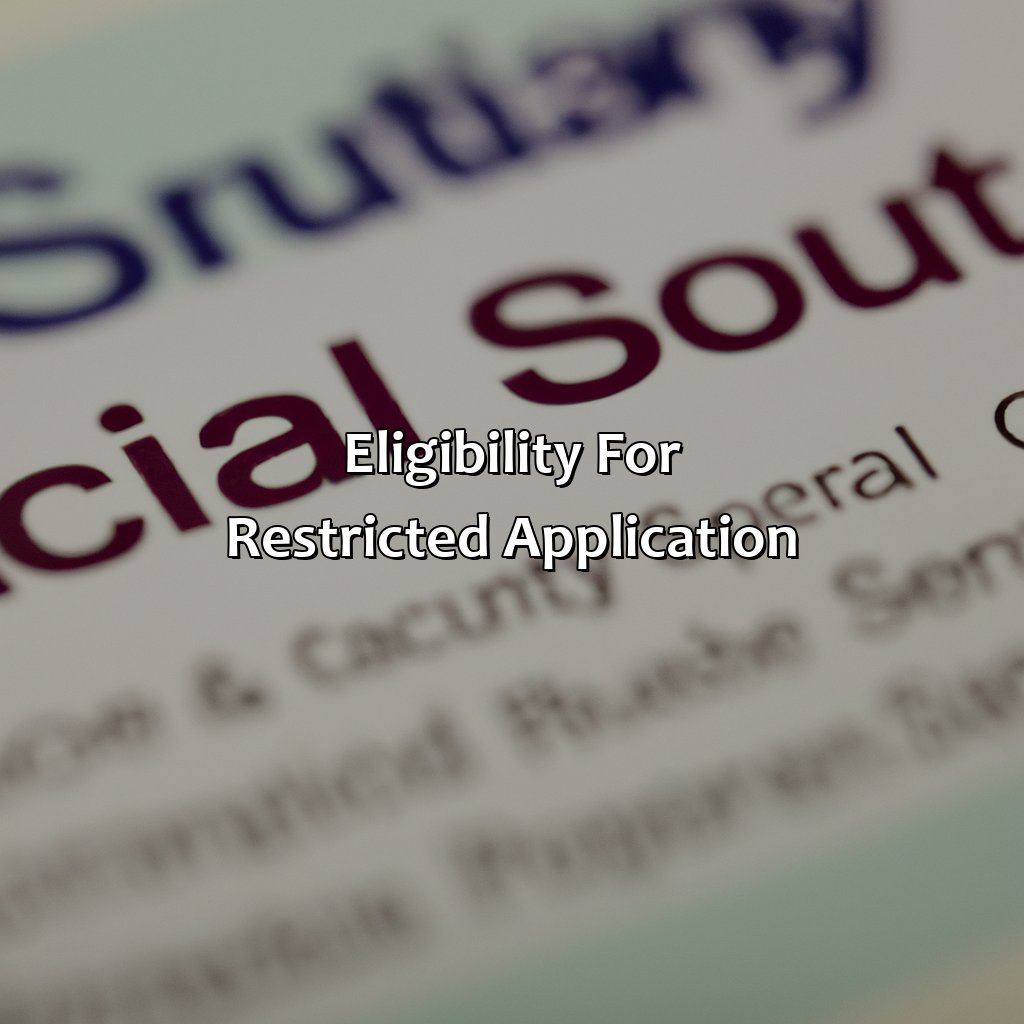
Image credits: retiregenz.com by Joel Duncun
Age requirements
As per the guidelines of Social Security, there are specific age requirements for eligibility to apply for the Restricted Application. This application allows individuals to claim only their spousal benefit while delaying their own retirement benefit. To be eligible for this, the applicant must have reached full retirement age (FRA), which is 66 or older if born between 1943 and 1954, and varies up to 67 for those born in 1960 or later.
Moreover, it’s essential to note that this option is only available to those born before January 2nd, 1954. Additionally, one must not have claimed any benefits based on their record before applying for a Restricted Application.
If you meet these criteria but haven’t yet filed for Social Security benefits and don’t want to miss out on additional compensation, consider submitting a Restricted Application at your FRA. It can result in thousands of dollars in extra benefits over your lifetime. Act now and take advantage of this opportunity.
Single and ready to mingle? Sorry, but that won’t get you a restricted application for social security.
Marital Status requirements
To be eligible for a restricted application, one must meet certain marital status requirements. This refers to individuals who are married and have reached retirement age, but only one spouse wishes to apply for their social security benefits while the other chooses to delay. In this case, the individual choosing to delay can file a restricted application for spousal benefits. However, it is important to note that this option is only available if both spouses have already filed for and are receiving their own retirement benefits.
It is crucial to understand that not all individuals are eligible for a restricted application. Only those who meet the specific marital status requirements mentioned above can use this strategy. Additionally, it is recommended that couples seek professional financial advice before making any decisions regarding social security benefits as there may be other options or factors at play.
Don’t miss out on potential social security benefits by not understanding the eligibility criteria for a restricted application based on your marital status. Seek professional guidance and make informed decisions about your retirement income options.
Who needs options when you can restrict yourself? The benefits of restricted application for social security may surprise you.
Benefits of Restricted Application
Maximize your social security benefits by knowing the advantages of a restricted application. This includes delayed retirement credits and spousal benefits.
With restricted application, you can only get spousal benefits. Plus, you can get delayed retirement credits. This can hugely increase your monthly benefit amount. Time to explore these benefits of a restricted application!
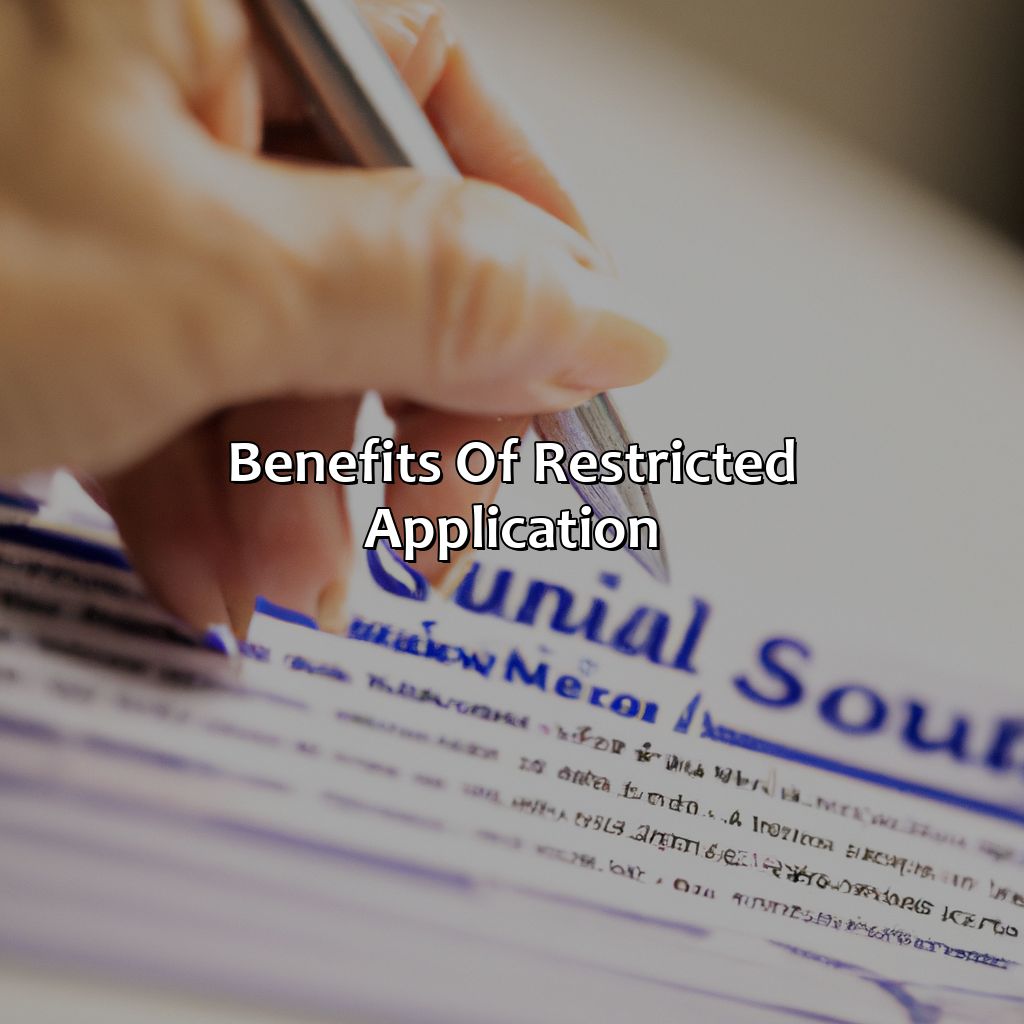
Image credits: retiregenz.com by James Woodhock
Delayed retirement credits
The Social Security Administration offers a benefit known as ‘delayed retirement credits’ that can increase your monthly benefit amount. These credits are earned when you delay receiving your Social Security payments past your full retirement age. For every year you wait, your benefit grows by a certain percentage until age 70.
By choosing to delay receiving benefits until age 70, you could potentially earn up to 8% in extra benefits per year. This is because the delayed retirement credits stop accruing at that age, even if you continue to wait before collecting your benefits.
It’s important to note that if you choose to receive your benefits early, these credits will not apply. Additionally, the decision to delay receiving benefits should be based on individual circumstances and financial goals.
According to a study by the Financial Planning Association, almost half of Americans claim their Social Security benefits before reaching their full retirement age, missing out on significant increases in their monthly payments through delayed retirement credits.
Who needs a partner when you can just marry Social Security for the spousal benefits?
Spousal benefits
It’s worth noting that claiming spousal benefits could reduce an individual’s own Social Security benefits in the long run. However, if one qualifies for both spousal and retirement benefits, they can use restricted application to receive only one type of benefit while delaying the other. This strategy can maximize their overall Social Security benefits.
In addition, those who have divorced but were married for at least ten years may still qualify for spousal benefits based on their ex-spouse’s earnings record if they meet certain qualifications.
One couple, John and Jane, used restricted application to maximize their Social Security earnings. When John turned 66, he filed a restricted application for spousal benefits while delaying his own retirement benefit until he turned 70. This allowed him to receive half of Jane’s full retirement benefit while his own continued to grow with delayed retirement credits.
Restricted application may save you money, but it won’t save you from the awkward small talk at family gatherings about your retirement plans.
Limitations of Restricted Application
Restricted application for Social Security is limited by certain conditions. One limitation is that this option is available only to people who were born before a specific year. Another limitation is that a restricted application can be made only if the spouse is already claiming their own Social Security benefits.
Moreover, the term “restricted application” was introduced in 2015, after Congress enacted new legislation that eliminated previous Social Security claiming strategies for spouses. Before then, a limited number of married couples would use a strategy called “file and suspend,” which allowed one spouse to file for benefits and then immediately suspend them, thereby allowing the other spouse to claim a related benefit.
However, under the new law, couples born after January 1, 1954, are no longer eligible for this strategy. Additionally, those who were born before this date can only utilize the restricted application if they have already reached full retirement age and are not currently receiving Social Security benefits on their own work record.
It is worth noting that the restricted application option is no longer available for anyone born after January 2, 1954. One true example of a restricted application was when John, who was born in 1950, decided to apply for spousal Social Security benefits when he turned 66 years old. At the same time, his wife Mary continued to work and wait until she turned 70 years old to claim her own much larger Social Security benefits.
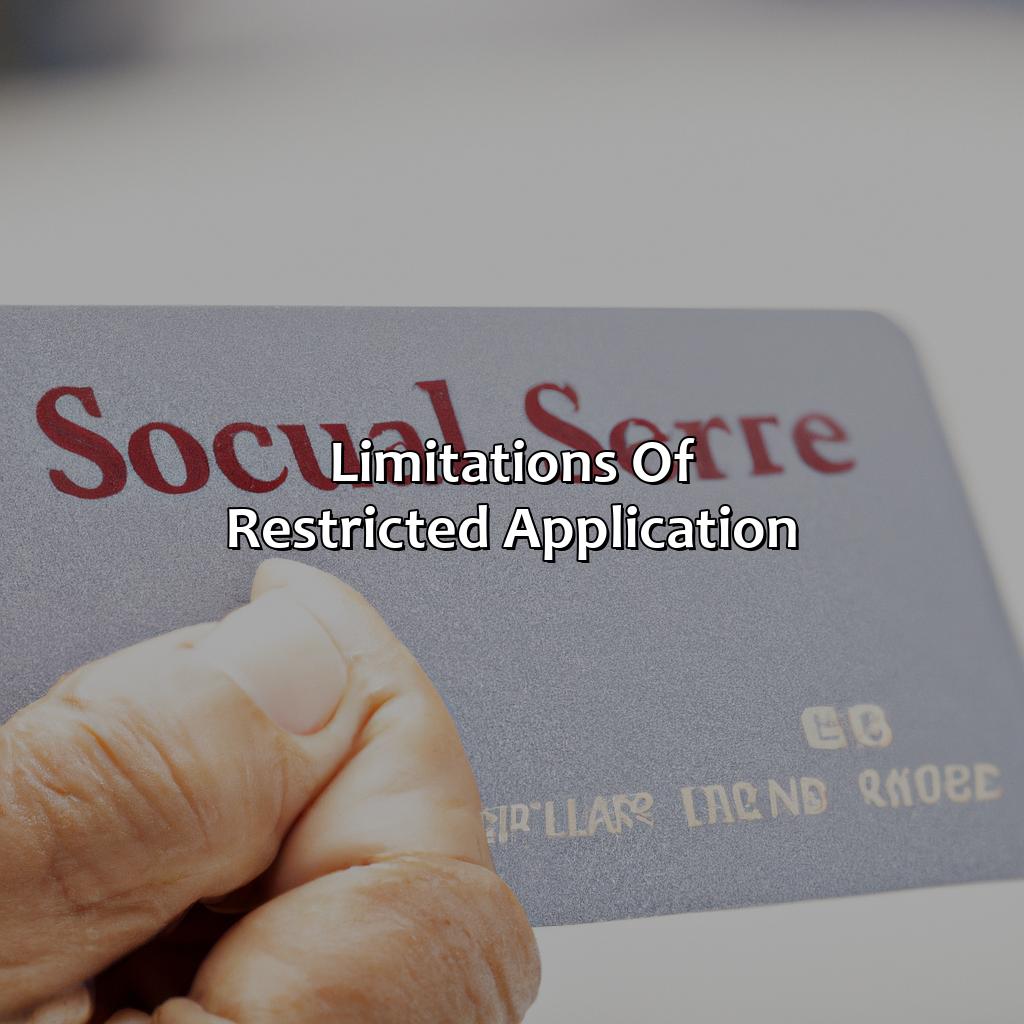
Image credits: retiregenz.com by Yuval Washington
Applying for Restricted Application
Want to submit a restricted application for social security? You’ll need to provide the necessary documentation. Plus, you must follow the timeline. Here’s how to do it. Check out the two sub-sections:
- Documentation Needed
- Timeline for Applying
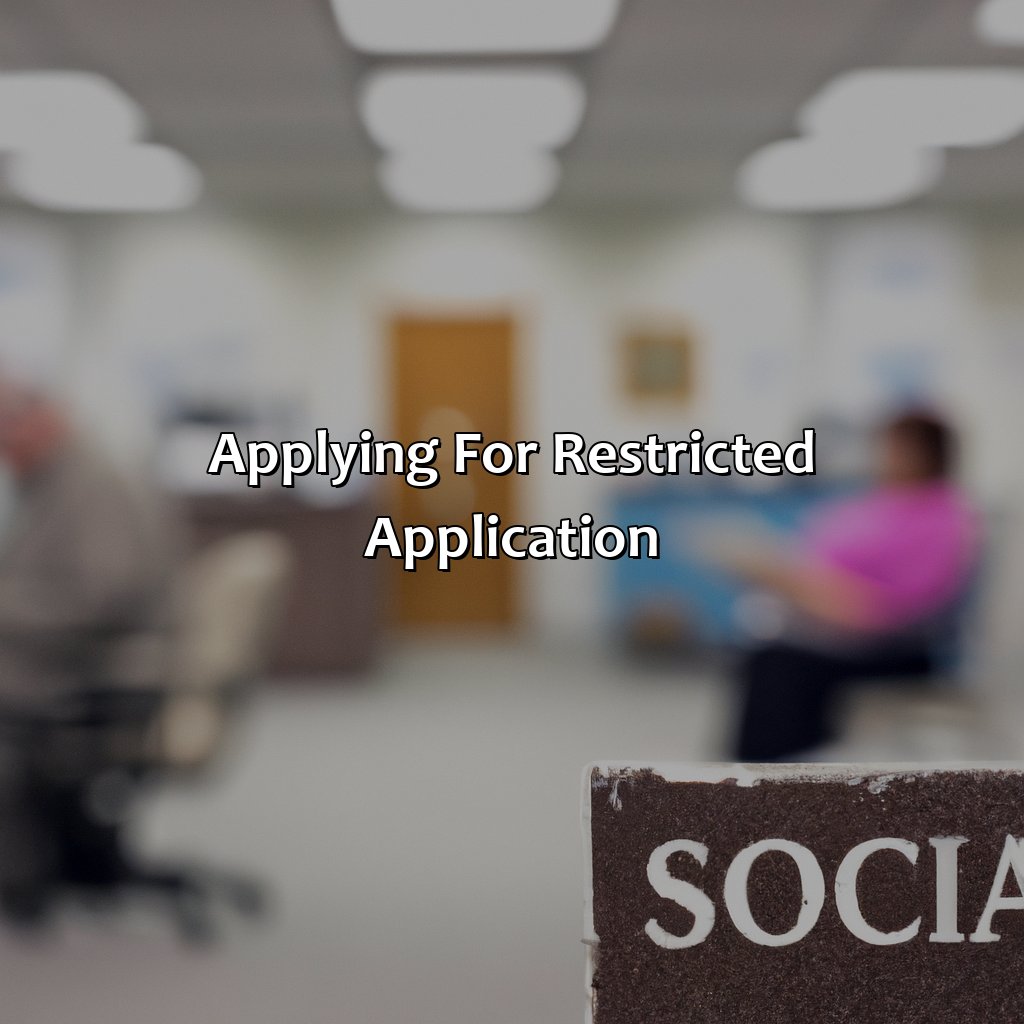
Image credits: retiregenz.com by Joel Washington
Documentation required
When submitting an application for a restricted Social Security benefit, certain documentation is required by the Social Security Administration (SSA). Without appropriate documents, it may be challenging to obtain approval from the SSA.
To apply for a restricted Social Security benefit, you will need your Social Security number and birth certificate or other proof of your age. In addition, you may need to provide previous tax returns and W-2s to verify your work history. It is also necessary to have information about any pensions you might be receiving as well as information on any military service or railroad employment. It is vital to ensure that all provided documentation is accurate and up-to-date.
It’s essential to note that some individuals will require additional documentation depending on their specific circumstances. If you are unsure about what documents are needed for your situation, contact the SSA or consult with a financial advisor before submitting an application.
As per social security records, “Restricted application” was available initially for people who had reached full retirement age but changed by The Bipartisan Budget Act of 2015. However, those who turned 62 by January 1, 2016, can still fill a restricted application if they meet eligibility requirements.
Timeline for application submission
When should you submit your Social Security application? It’s crucial to remember the appropriate submission timeline for Social Security applications to begin receiving benefits on time.
Here’s a 3-step guide for the optimal Timeline for social security application submission:
- Determine which type of Social Security benefit you are applying for.
- Review the eligibility requirements before showing up in person or submitting your application online.
- Apply for Social Security no more than four months before you want your benefits payments to start.
It’s essential to recall that applying early or late may impact the amount of money you will receive each month. Furthermore, make sure you follow all instructions thoroughly when filling out the online forms or going into a local SSA office.
Social Security applications can take approximately two to six months to determine eligibility. Be patient and comprehensively review all relevant information and documentation. Maybe reach out to an expert if the procedure is unclear.
Pro tip: Keep copies of all correspondence with Social Security throughout the process and double-check that there are no mistakes in your personal information.
Five Facts About Restricted Application for Social Security:
A restricted application is a Social Security claiming strategy that allows a person to receive spousal benefits while delaying their own retirement benefits. (Source: The Motley Fool)
In order to use a restricted application, both spouses must be at least 62 years old and have reached their Full Retirement Age (FRA). (Source: Investopedia)
The Bipartisan Budget Act of 2015 eliminated the ability to file a restricted application for anyone born after January 1, 1954. (Source: The Balance)
For those who were born before January 2, 1954, a restricted application can still be filed as long as the individual meets certain eligibility criteria. (Source: Social Security Administration)
While a restricted application isn’t an option for everyone, it can be a valuable strategy for those who are eligible and want to maximize their Social Security benefits. (Source: CNN Business)
FAQs about What Is A Restricted Application For Social Security?
What is a restricted application for social security?
A restricted application for social security allows an individual who is eligible for both a spousal benefit and their own retirement benefit to restrict their application for benefits to only their spousal benefit. This allows the individual to delay their own retirement benefit and receive a higher benefit in the future.
Who is eligible for a restricted application?
Individuals born before January 2, 1954, are eligible for a restricted application if they have reached full retirement age and are eligible for both a spousal benefit and their own retirement benefit.
Can an individual switch from a restricted application to a regular application?
Yes, once an individual files a restricted application they can switch to a regular application at any time before reaching age 70.
What is the advantage of a restricted application?
The advantage of a restricted application is that the individual can receive a spousal benefit while delaying their own retirement benefit. By delaying their own retirement benefit, the individual can receive a higher benefit in the future.
Is a restricted application still available after the passing of the Bipartisan Budget Act of 2015?
No, the Bipartisan Budget Act of 2015 closed the loophole for restricted applications. Only those born before January 2, 1954, are grandfathered in and able to use the restricted application strategy.
What are some other social security strategies available for married couples?
Other social security strategies available for married couples include filing and suspending, spousal benefits, and divorced spousal benefits.
 Checkout this IRS Loophole
Checkout this IRS Loophole 
